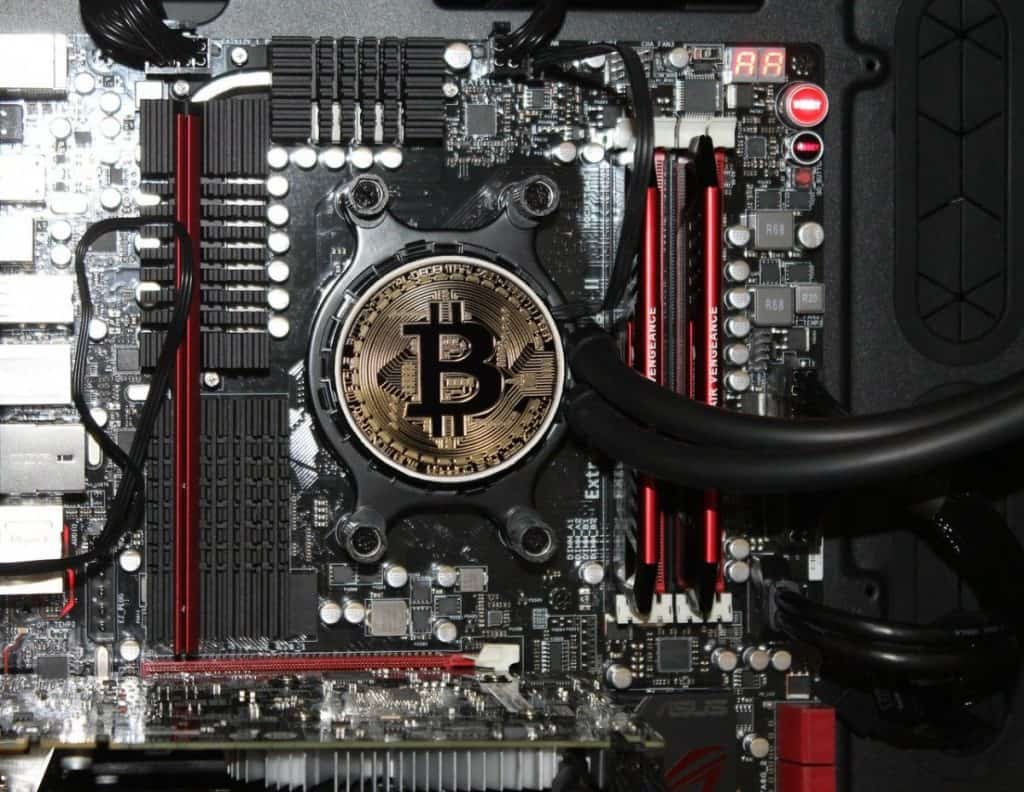Have you heard people mention Bitcoin or Ethereum and wondered what they’re talking about? Or maybe you’ve overheard a discussion on the train or the bus about blockchain and thought the people talking were talking in code? Perhaps all of this talk about the economy of cryptocurrency has intrigued you, and you’ve decided it’s time to figure it out. Cryptocurrency versus Blockchain: what’s the difference?
It’s a bit oversimplified, but one is a transaction facilitator; the other is the transaction record-keeping process. Both are required for the transaction. A blockchain is a network of nodes, or computers, running software all over the world to perform a specific function. A cryptocurrency is the incentive used to keep those nodes up and running to support the network.
This article will dig deeper into what cryptocurrency is and how blockchains are created. By the end, you will have a better understanding of both. And don’t worry, you don’t have to be a master of the dark web or a financial wizard to understand this stuff.
How Did Cryptocurrency Get Started?
It seems implausible, but cryptocurrency’s beginnings date back to the 1980s. When David Chaum, of the Netherlands, was concerned with the credit card identity theft trend that was gaining momentum, he began developing a product called Digicash.
As the Netherlands government became concerned with the DigiCash trend, they required Chaum to only flow the sale of this virtual currency through licensed banks. As a result, the fund went broke in the late 1990s.
Although that was a relatively short-lived centralized process, it was the beginning of today’s version of cryptocurrency.
You’re probably more familiar with hearing about Bitcoin when it comes to virtual currency. Even at that, it has only been around since 2009.
Bitcoin was initially developed by Satoshi Nakamoto and introduced via a paper posted to a cryptography mailing list discussion. The paper was titled: Bitcoin – A Peer to Peer Electronic Cash System with a premise that it would be possible to send funds between individuals without having to use a centralized banking institution.
Nakamoto remains an enigma to this day as nobody knows if this is an individual or a conglomerate of some sort. Since the paper’s abstract includes the line, “We propose a solution…” it seems to follow that there is more than one individual involved in the development of this venture.

Understanding the Language of Virtual Currency Processes
There are several terms that are important to understand when discussing the processes surrounding cryptocurrency.
- Cryptography
In order for anything to be secure, there needs to be a process involved that makes it extremely difficult for hackers to break hijack the system. This is where cryptography comes into play.
Dictionary.com defines cryptography as “the science or study of the techniques of secret writing, especially [computer] code and cipher systems, methods, and the like.”
So, at its most basic level, cryptography is the secret algorithm that provides security to a product or individual’s identifying features.
- Cryptocurrency
A finite number of digital or virtual currencies created to be used as a method of exchange for goods or services. Unlike fiat currency, cryptocurrency cannot be unlimited supply. Current popular cryptocurrencies are not limited to, but include:
- Bitcoin
- Ethereum
- Ripple
- Litecoin
- Dash
- NEO
- NEM
- Monero
- Fiat Currency
A physical government-designated currency that isn’t backed by a specific commodity such as gold or silver. When a government’s treasury “prints” new money without commodity backing, it is considered to be fiat currency. The value of the currency is based on the country’s historic ability to provide backing for the funds.
Fiat currency is something that can be touched and held in an individual’s physical possession.
- Blockchain
As it’s currently defined, a blockchain is a distributed peer-to-peer technology that creates a virtual ledger used to store and transfer virtual funds, goods, and services, or to perform functions like tracking, record-keeping, app development and more.
Using somewhat less technology lingo, it’s a process that requires all decentralized semi-anonymous parties involved in a transaction to agree to, and sign off on, that activity in a virtual environment.
This creates a strong audit trail that is managed by a decentralized membership of millions of computers, known as nodes, via secure coding associated with each step. No one computer houses all of the information; instead, each node stores a portion of the information to assist in maintaining the integrity, and security, of the process.
Similar to computer brands, there are hundreds of versions of blockchains in existence today. Not all are intended to do the same thing, and each has its own proprietary process.
- Nodes
The system of peer-to-peer computers that own the cryptocurrency and agree to the various movement of virtual currency-based transactions.
- Hash
The output coding used to identify each step in the blockchain. The contention is that this process is the most secure because one single change at any point in the chain changes that point’s hash output. The change in that step in the output would corrupt the entire chain making it virtually impossible for hackers to alter a historical process.

Is Cryptocurrency for the Online Underworld?
There is an urban myth that the only individuals who would be interested in using cryptocurrency are black market and dark web traders. While the nefarious nature of these suspicions makes some hesitant to consider entering into cryptocurrency processes, and others have almost a helpless draw, it isn’t nearly as dastardly as some want you to believe.
Just as you carry a wallet in your pocket or handbag, people who trade in cryptocurrency use a virtual wallet – much like what you see when you use a system like PayPal.
There are two significant differences between cryptocurrency and fiat currency:
- You only have an electronic record of funds with cryptocurrency, and with fiat currency, you have something tangible you can touch. The reality is that both have values that are governed by markets.
- Fiat currency is issued by the government and managed in a centralized environment (i.e., The Federal Reserve), while cryptocurrency is managed by a decentralized algorithm process.
There is still a lot that isn’t understood about virtual currency; therefore, it tends to be somewhat volatile in nature. Third-party brokers and exchanges are a typical entry point for cryptocurrency. A popular one is Coinbase Pro.
Just like any other investment, using cryptocurrency as an investment strategy is subject to tax implications.
Applications for Virtual Currency
It may come as a bit of a surprise, but there are many well-known retailers that accept Bitcoin as payment for goods. Here’s a sample:
| AT&T | Intuit |
| Bees Brothers | Microsoft |
| Bloomberg | NewEgg |
| CheapAir.com | Overstock |
| Dish Network | Pets Pyjamas |
| eGifter.com for The Gap, GameStop, and JC Penney | Purse.io can be used to make purchases through Amazon |
| Expedia | Rakuten |
| Fast Tech | Save the Children |
| Foodler | Shopify |
| Gyft | Wikipedia |
You can also get a Bitcoin debit card. Because these are issued by MasterCard and Visa, but funded with Bitcoins, they can be used the same way as your traditional bank-issued debit card. So, if your favorite retailer isn’t officially accepting virtual currency from your virtual wallet, you can still use your Bitcoin to buy your favorite cup of coffee.
Cryptocurrency Value – Watch Your Decimal Points
Your virtual currency doesn’t work the same way your fiat currency does. With the exceptions of your coins, your fiat currency is based on whole numbers in a base 10 system.
At its inception, only a certain amount of virtual currency is issued as defined by the software protocol. Once that amount has been distributed, no more will be created. (At least that’s the current intent.) Bitcoin, for example, is limited to 21 million units. Projections suggest that Bitcoin’s last distribution will occur sometime in 2140.
As of the writing of this article, one unit of Bitcoin is valued at approximately $6,200, according to coinmarketcap.com, with 18,234,187 of the 21 million Bitcoin in circulation.
Because bitcoin and crypto values can vary, transactions are often handled in fractions of the coin. This makes calculating and managing your decimals critical. The least amount of Bitcoin an individual can own is 0.00000001 Bitcoin, known as a satoshi.
You can imagine how getting your decimal in the wrong place when you’re making a purchase could have devastating effects. Imagine using only five decimal places instead of eight. Let’s do the math using $10,000 – it’s a nice round number and easier to think in terms of decimals.
- In this example, if we purchased something for .005 Bitcoin, it would be the equivalent of spending $50. Forget your decimals and tell the seller you’ll pay 5 Bitcoin, and you’ve suddenly spent $50,000. That could be a financial tragedy. Even .05 or 0.5 result in huge overpayment.
Your initial thought is probably that, “oh, well, they’ll just give me a refund.” That’s not how virtual currency works. Because virtual currency is not regulated, and both parties sign off on the blockchain, you have no recourse if you make an error. You’re out the money. One of the advantages of cryptocurrency is that transactions are non-reversible. The record is immutable. But that’s also one if it’s disadvantages, as you must rely on the honestly of others to rectify any mistakes.
So, let’s understand more about blockchain technology.
Tying Blockchain Technology to Your Cryptocurrency Purchases
We now know that there are only a certain number of cryptocurrencies available to the interested market.
- As each piece of currency is released for issue, it is assigned an identifier that is coded and encrypted into the first block of code relating to that piece of virtual currency. Since we also know that these currencies can be issued in fractional portions, it follows that there are multiple entries into that first block.
- The next transaction tied to that particular piece of currency is coded and linked to that first block with an associated hash between each of the blocks.
- Once the transaction is tied to the chain, it becomes an irreversible record. This prevents double-spending or even kiting.
Think of it in terms of crime shows you may watch on tv. They talk about the chain of evidence. That’s basically what this becomes as it relates to that particular block of currency – its own chain of evidence.
There’s a definite beginning place where the blockchain starts, but there isn’t a defined place where the chain ends since the virtual currency is continually used to buy and sell. Unless, of course, it is simply an investment sitting in a virtual wallet.
The interesting thing about this, though, is that each individual is identified not by name or social security number, but by a created handle and private key.
Is a Blockchain User Anonymous?
One thing that many individuals want when it comes to their finances is anonymity. Blockchain technology offers a semblance of just that. But it is only semi-anonymous depending on how you acquire and dispense with your coins.
If you purchase cryptocurrency on an exchange account, then every move of those coins can be tracked back to your account. In that situation, you have no anonymity. The exchange can simply turn your account info over to any legal body that requires it.
There are some crypto currencies that offer anonymity. You can read more about them here. But even then, if you purchase using personally identifiable info, it will be clear that you own or owned the currency. It’s just that activity after purchase cannot be tracked.
Blockchain Identifiers
In the Bitcoin blockchain process, currency owners are also given a private key (think password) that is between 1 and 78 numbers in length. Here’s the downside to this private key, though: if you lose it or misplace it, you can’t get it replaced.
Without your key, you can’t access your cryptocurrency. Ever. It would be as if you lost your wallet somewhere and didn’t have any identifying information in it to help someone return it to you.
Some cryptocurrency owners use the system generated private key they’ve been presented with; others create their own.
So how are you supposed to remember a series of 78 numbers? You’re not. Even though everything you have been taught about passwords says not to write them down or keep them anywhere. Shrewd cryptocurrency owners keep multiple hard copies in safe, non-computer-related places to avoid losing their investment. Or in encrypted hardware wallets like the Ledger or Trezor products (both links to their official shops.)
Can you imagine having multiple handles and associated key sequences? It would be necessary to keep a record of which key is tied to which handle so you can access your cryptocurrency.
A Decentralized Process in a Centralized World
Having grown up in a centralized banking and record-keeping world, this process may seem a bit paradoxical. How is it possible that there isn’t one place that houses everything?
Let’s go back to the concept of the nodes we briefly defined above.
It is true that there is a group of super-users, known as miners, involved in the process. These individuals and/or organizations use extremely powerful computers. These aren’t individual desk-top computers, but farms of processors that have intense computing power (and require a significant amount of energy to run).
These miners manage the blockchain.
What Role Do Miners Have in Blockchain?
But here’s where it gets confusing: not all miners involved in the blockchain are tied to one another. They don’t all work for the same organization, and they may be a series of un-associated individuals who are responsible for solving very complicated algorithm puzzles (that’s a gross understatement and simplification) to make sure that the blockchain’s continuity and integrity are kept intact.
- The only tie that these miners have to one another is that they are working on the currency’s blockchain. This is part of what ensures the process integrity of the blockchain. There are checks and balances.
- These miners get paid in the cryptocurrency they mine based on the work they complete. When they add a piece to the chain, it’s verified by other sources that have nothing to lose.
- On top of that, each cryptocurrency owner has a portion of the blockchain on their own computer. Although the average individual is not mining the data, they can see their piece of the chain and confirm the accuracy of the record.
This becomes easier when you consider the transaction process.
How Transactions Work: What a Purchase Looks Like
Say you own .75 Bitcoin. Using the same $10,000 valuation we discussed earlier, we’ll assume that equates to about $7,500 USD in cryptocurrency.
We now know that you can use your virtual currency to book a trip on Expedia. So, you’ve decided it’s time to take a two-week-long cruise. You’ve chosen your trip and send Expedia a request for a booking totaling .25 virtual currency. Expedia will accept your request and send you a notification that you, in return, agree to via virtual signature using your handle and key.
This becomes your piece of the blockchain as it relates to that piece of virtual currency. You can later perform a search on your private key and view your transactions similar to how you currently can view your online banking statement.
Cryptocurrency Value Volatility
Here’s the thing you need to keep in mind when thinking about your cryptocurrency: cryptocurrency value isn’t always worth the same thing.
Think of the stock market. One day a particular stock can be worth $85 per share, the next, it could be up to $850 per share and the next down to $50 per share. Granted, the stock market moves, but it isn’t typically that volatile.
Cryptocurrency, however, can – and historically has – experienced wild swings in value.
The same can be said of fiat currency – as it relates to other fiat currencies. The dollar’s value to the pound or the yen varies based on the markets. The thing is, that dollar that you hold in your hand will buy something that is valued at a dollar regardless. And then variances are much smaller.
Where the fiat currency volatility comes into play is in the marketplace. Today a loaf of bread may cost $2.50, but next week, if there’s a tragedy that impacts the processing or delivery of that bread, it may cost $4.
The point is that your cryptocurrency may have a completely different value tomorrow than it has today. Similarly to how the stock market is approached, do not plan on investing in the crypto market unless you are prepared to potentially lose your investment. Sure, there are some big wins, but there are also some big losses.
The other side of that virtual coin is that as less of a particular cryptocurrency becomes available to the market, the more valuable it becomes. Just as there is a limited supply of precious metals available – for example, gold, as it exists today, there is a limited supply of any particular cryptocurrency.
Understanding the Most Prominent Cryptocurrencies
Bitcoin has been a consistent example in this article to maintain the thought-process continuity, but as discussed earlier, it isn’t the only cryptocurrency available in today’s marketplace. In fact, estimates place between 1,200 – 1,400 different types of cryptocurrency are currently in existence.
- Bitcoin – Crypto Market: BTC
A peer-to-peer network used to process payments without involving financial institutions initially created by the individual or consortium known as “Satoshi Nakamoto.”
Based on coinmarketcap.com – similar to looking at the NASDAQ for stocks, here’s an example of the market volatility discussed above (the numbers are specific to BTC, but the issue isn’t):
- All Time Unit High: $20,089 USD (December 17, 2017)
- All Time Unit Low: $65.53 USD (July 5, 2013)
- Unit Price as of the writing of this article: $9,620.35 USD (February 2020)
- Ethereum – Crypto Market: ETH
This went live on July 30, 2015, with 72 million units allocated for release. Vitalik Buterin initially conceptualized the decentralized application process that allows the smart contract process managed by the algorithms and hosted on millions of decentralized computers. As with Bitcoin, Ethereum can be issued in partial units based on decimal points.
Based on coinmarketcap.com – similar to looking at the NASDAQ for stocks, here’s an example of the market volatility discussed above (the numbers are specific to ETH, but the issue isn’t):
- All Time Unit High: $1,432.88 USD (January 13, 2018)
- All Time Unit Low: $.420897 USD (October 21, 2015)
- Unit Price as of the writing of this article: $262.95 USD (February 2020)
- XRP – Crypto Market: XRP
With a maximum supply of 100,000,000,000 units available, just under half of the supply is currently in market circulation at 43,749,413,421 units. This particular cryptocurrency is known for how nimble it is and its fast transaction confirmations. It has a lower price point right now, but part of that has to do with how much availability is forecast.
Based on coinmarketcap.com – similar to looking at the NASDAQ for stocks, here’s an example of the market volatility discussed above (the numbers are specific to XRP, but the issue isn’t):
- All Time Unit High: $3.84 USD (January 4, 2018)
- All Time Unit Low: $.002802 USD (July 7, 2014) Yes, you’re seeing that correctly. That’s 2.8/10ths of 1 cent.
- Unit Price as of the writing of this article: $.268612 USD (February 2020)
- Litecoin – Crypto Market: LTC
With a maximum supply of 84,000,000 units, this cryptocurrency has distributed about 2/3 of its available cap. There are currently 64,154,650 units circulating for use. Litecoin was created by Charlie Lee based on the Bitcoin model but has different hashing algorithms allowing for a different level of mining.
Based on coinmarketcap.com– similar to looking at the NASDAQ for stocks, here’s an example of the market volatility discussed above (the numbers are specific to LTC, but the issue isn’t):
- All Time Unit High: $375.29 USD (December 19, 2017)
- All Time Unit Low: $1.11 USD (January 14, 2015)
- Unit Price as of the writing of this article: $74.34 USD (February 2020)
Downsides to Cryptocurrencies
Aside from the significant swings in values, there’s a perception issue that has to be overcome.
Although it is extremely difficult for thieves to perpetrate fraud on cryptocurrencies, it isn’t impossible. After all, as the saying goes, “if you give a mouse a cookie, it’s going to want some milk.” Challenge a hacker with the words “impossible to hack,” and you can be guaranteed that someone, or a group of someone’s, will figure it out.
Black hat hackers are considered to be some of the smartest and most nefarious white-collar criminals that exist. Despite the perception of the dark side of cryptocurrency, law enforcement doesn’t necessarily make crypto theft a priority in their heavy investigation load.
Ways to Avoid Cryptocurrency Theft
So, if law enforcement doesn’t necessarily see this type of theft as a priority, what can you do to protect your investment?
- Keep your private key private.
Don’t keep your private key on an electronic device, or even worse, in a repository that can be hacked.
- Make sure your virtual wallet is secure.
Some service providers offer the convenience of allowing you to store your private key in your virtual wallet. All this does is makes it easier for a hacker to get to your funds. Avoid using this service – it’s similar to when your computer asks you if you want it to store your password – always say no!
- Make sure you are dealing with a legitimate exchange.
Work with an exchange that has an established history. Granted, the cryptocurrency market is fairly new – less than 20 years old; you should still look for a history of activity.
Cryptocurrency Needs Blockchain Technology and Vice Versa
Cryptocurrency is the vehicle you can use to exchange for goods and services. Blockchain technology provides you with the record of your – and anyone else’s transactions – if you know their handle.
The transparency blockchain operates with is one of the things many find attractive, and unsettling, about the technology.
Hopefully, this has helped clear up some of the clouds of mystery surrounding cryptocurrency and blockchain!
The Cryptocurrency Forums is an Amazon Associate. As an associate, we earn from qualifying purchases. We are also an affiliate of Trezor, Ledger, Coinbase, NordVPN, Ezoic, and WPX. Use of affiliate links does not add any cost to the buyer.


